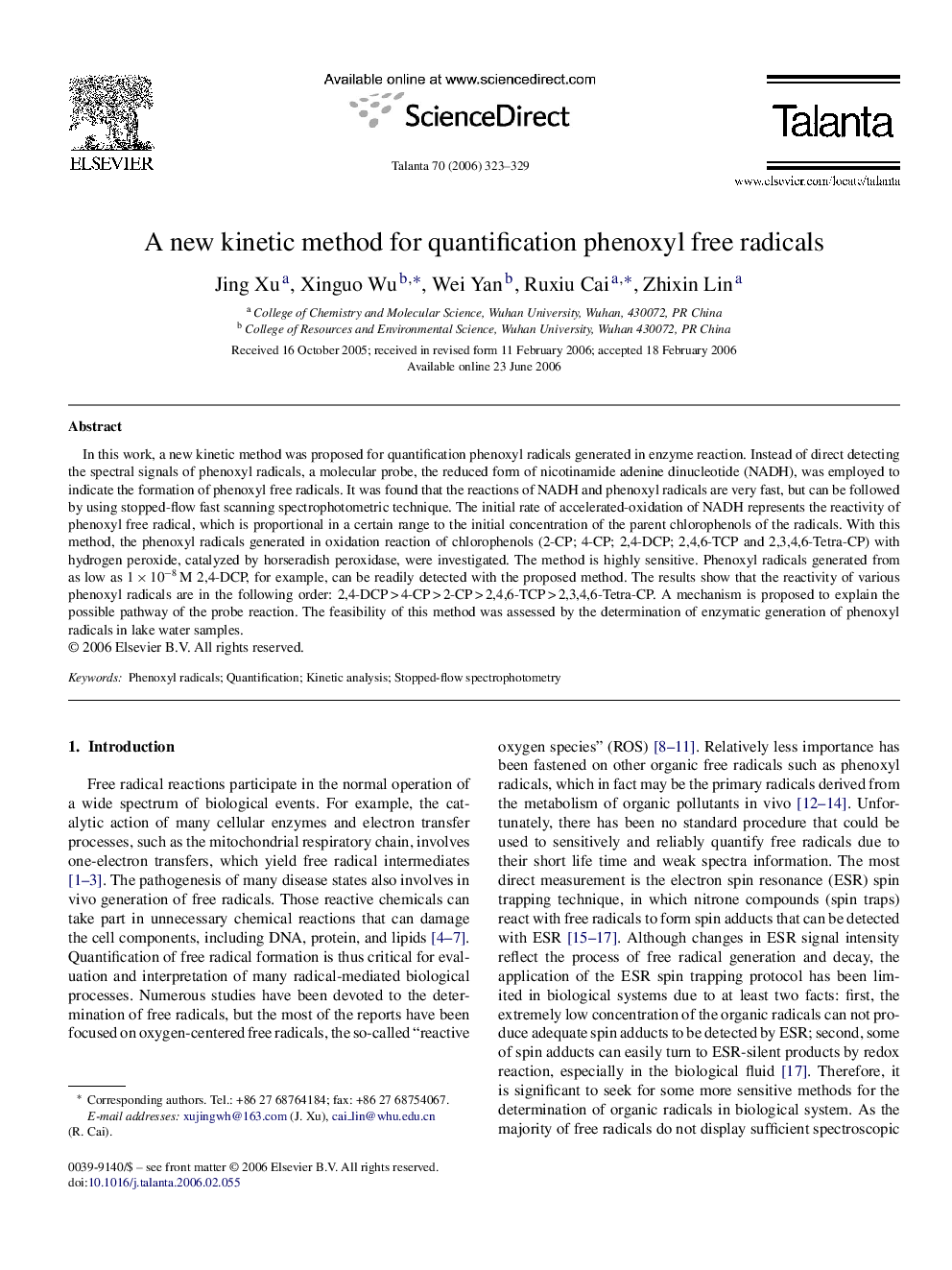| Article ID | Journal | Published Year | Pages | File Type |
|---|---|---|---|---|
| 1246458 | Talanta | 2006 | 7 Pages |
In this work, a new kinetic method was proposed for quantification phenoxyl radicals generated in enzyme reaction. Instead of direct detecting the spectral signals of phenoxyl radicals, a molecular probe, the reduced form of nicotinamide adenine dinucleotide (NADH), was employed to indicate the formation of phenoxyl free radicals. It was found that the reactions of NADH and phenoxyl radicals are very fast, but can be followed by using stopped-flow fast scanning spectrophotometric technique. The initial rate of accelerated-oxidation of NADH represents the reactivity of phenoxyl free radical, which is proportional in a certain range to the initial concentration of the parent chlorophenols of the radicals. With this method, the phenoxyl radicals generated in oxidation reaction of chlorophenols (2-CP; 4-CP; 2,4-DCP; 2,4,6-TCP and 2,3,4,6-Tetra-CP) with hydrogen peroxide, catalyzed by horseradish peroxidase, were investigated. The method is highly sensitive. Phenoxyl radicals generated from as low as 1 × 10−8 M 2,4-DCP, for example, can be readily detected with the proposed method. The results show that the reactivity of various phenoxyl radicals are in the following order: 2,4-DCP > 4-CP > 2-CP > 2,4,6-TCP > 2,3,4,6-Tetra-CP. A mechanism is proposed to explain the possible pathway of the probe reaction. The feasibility of this method was assessed by the determination of enzymatic generation of phenoxyl radicals in lake water samples.
